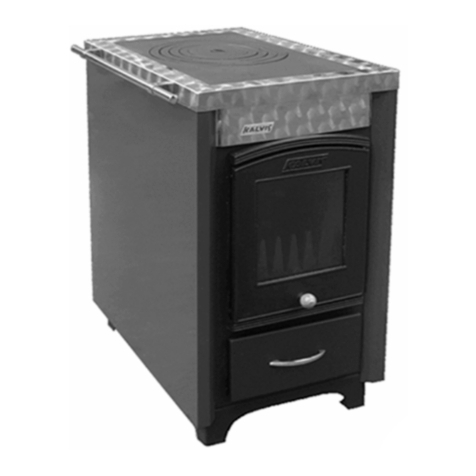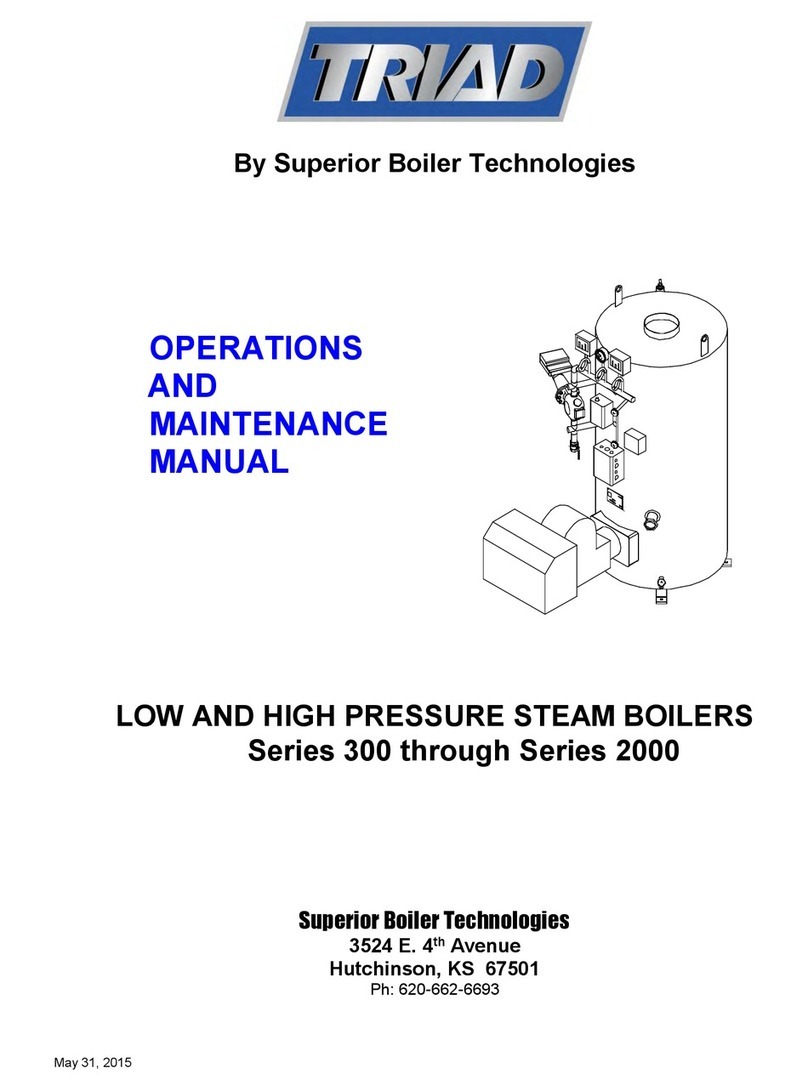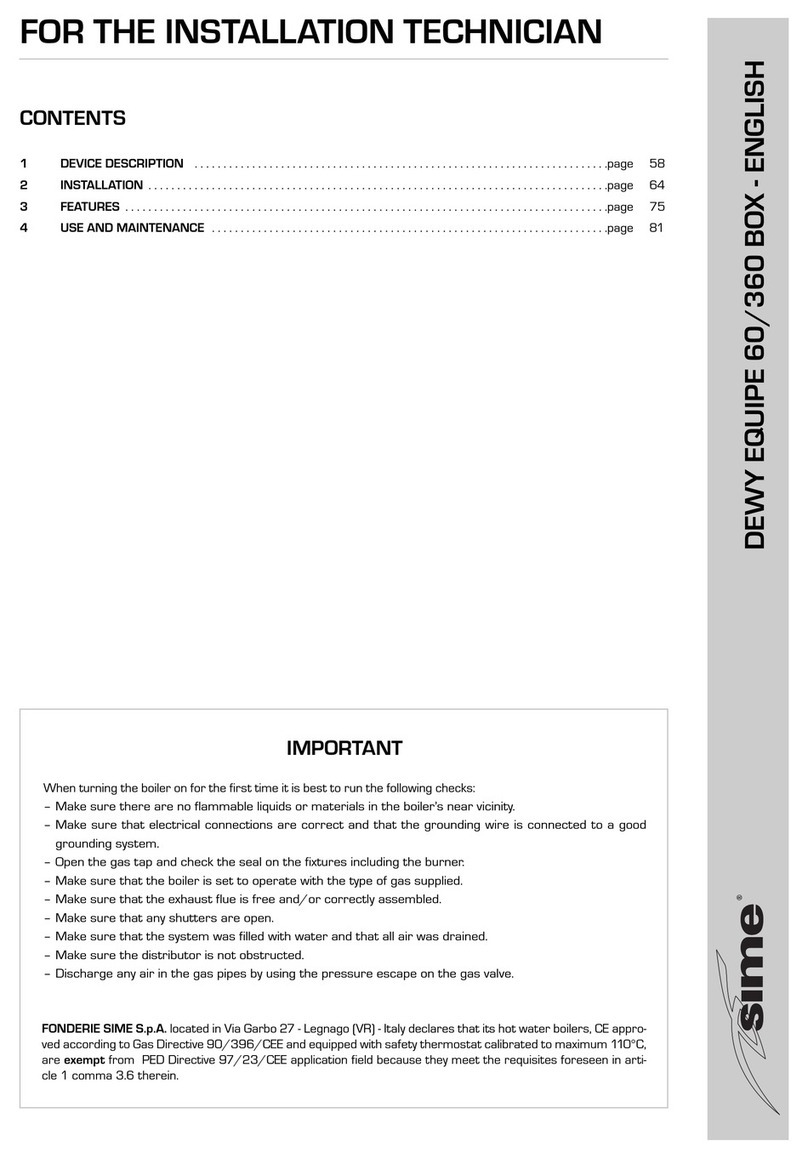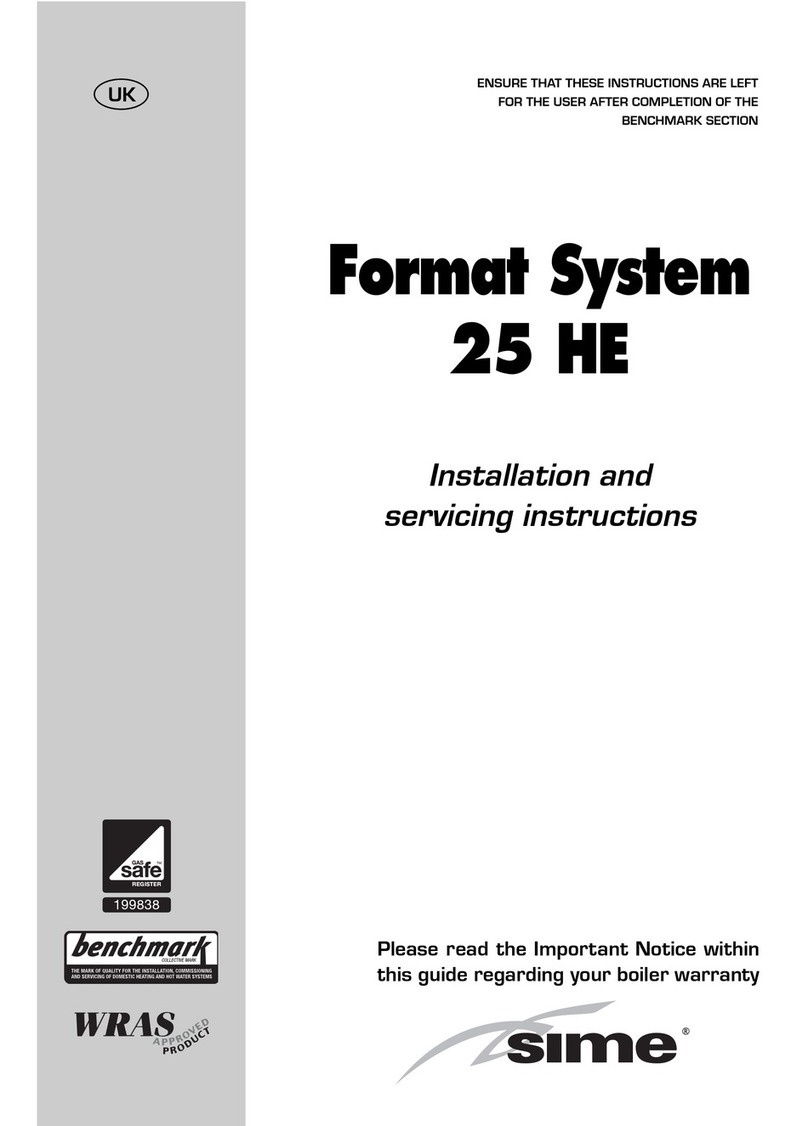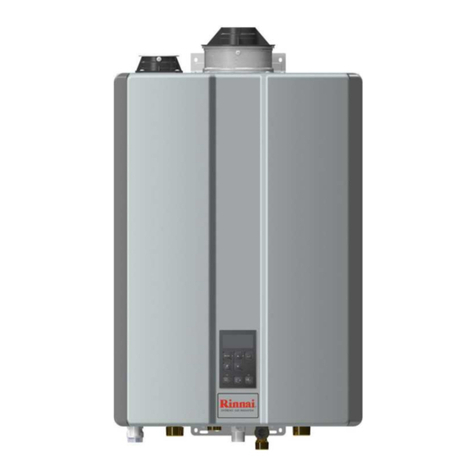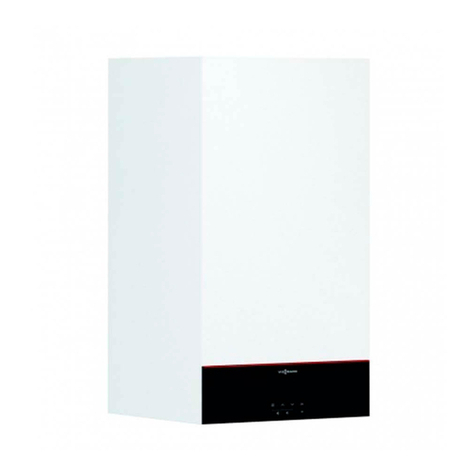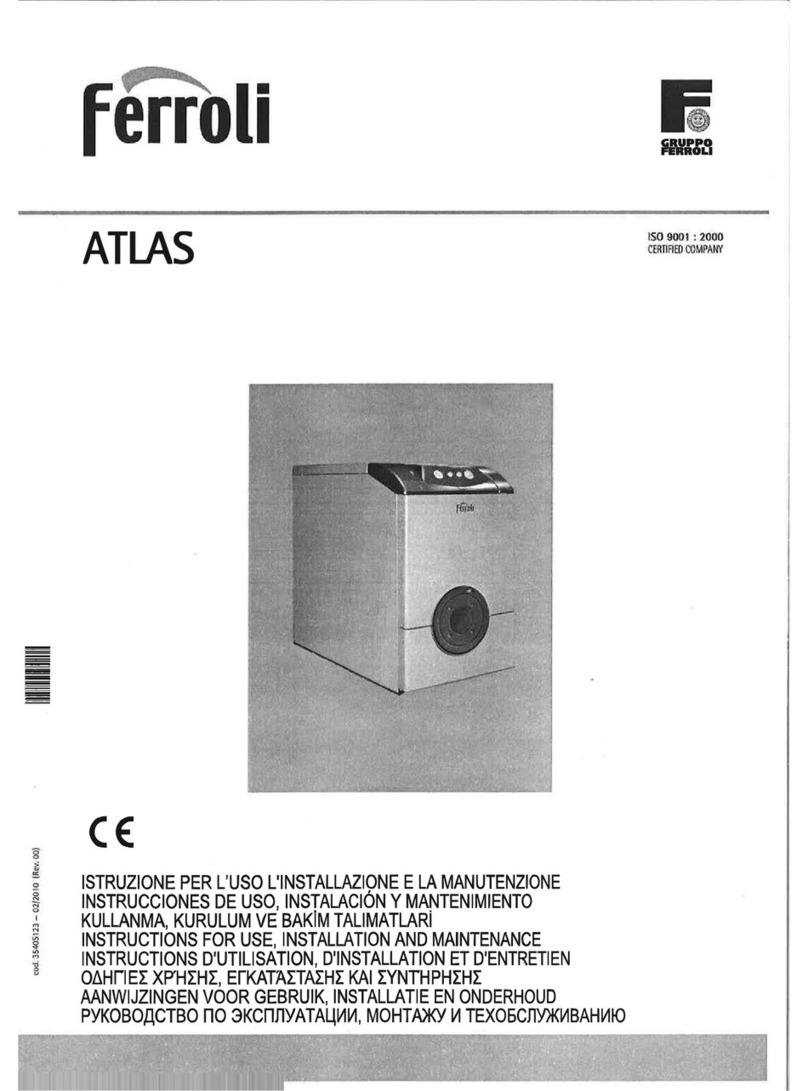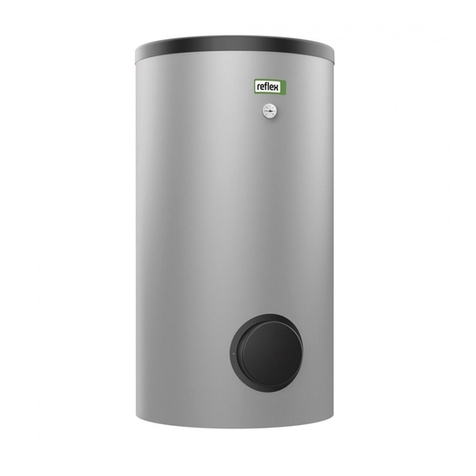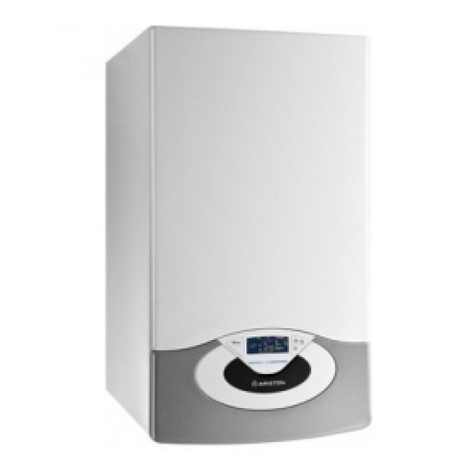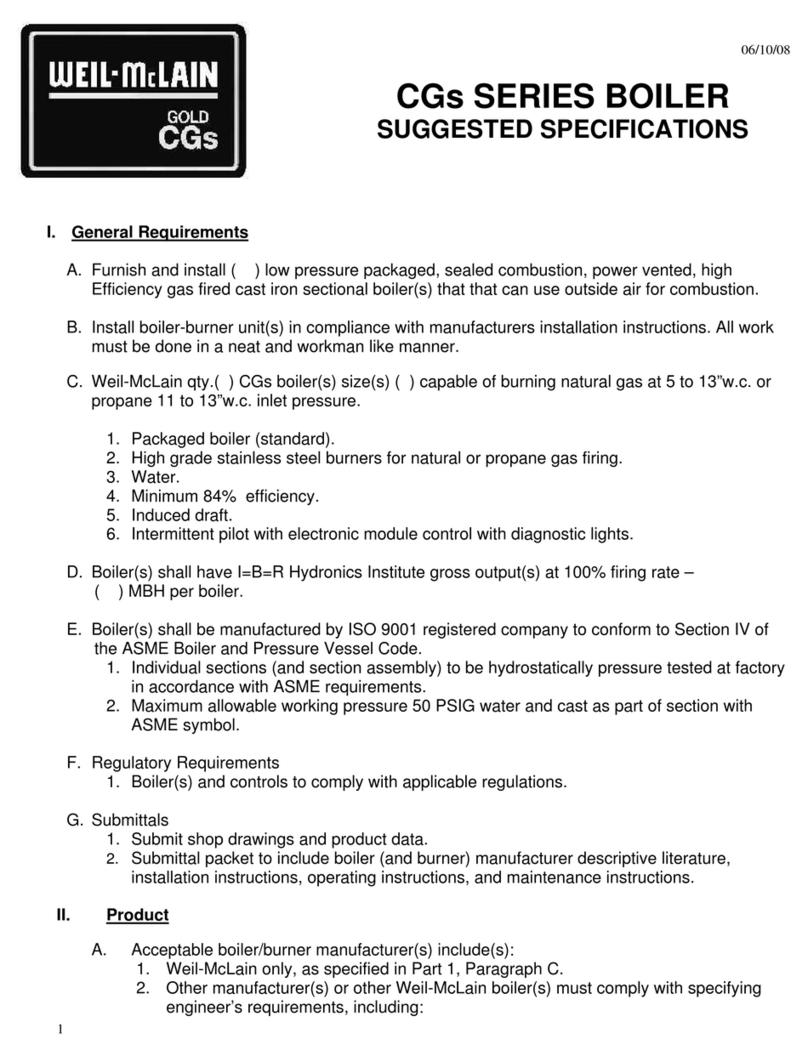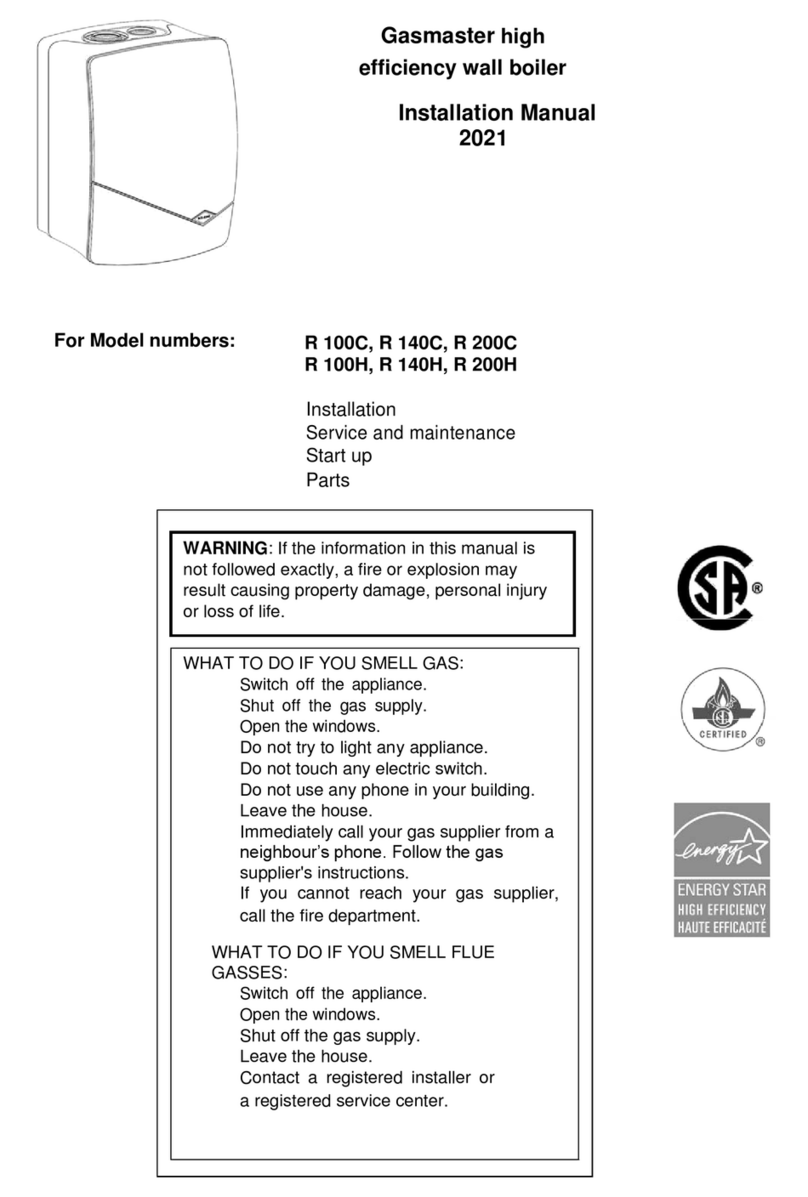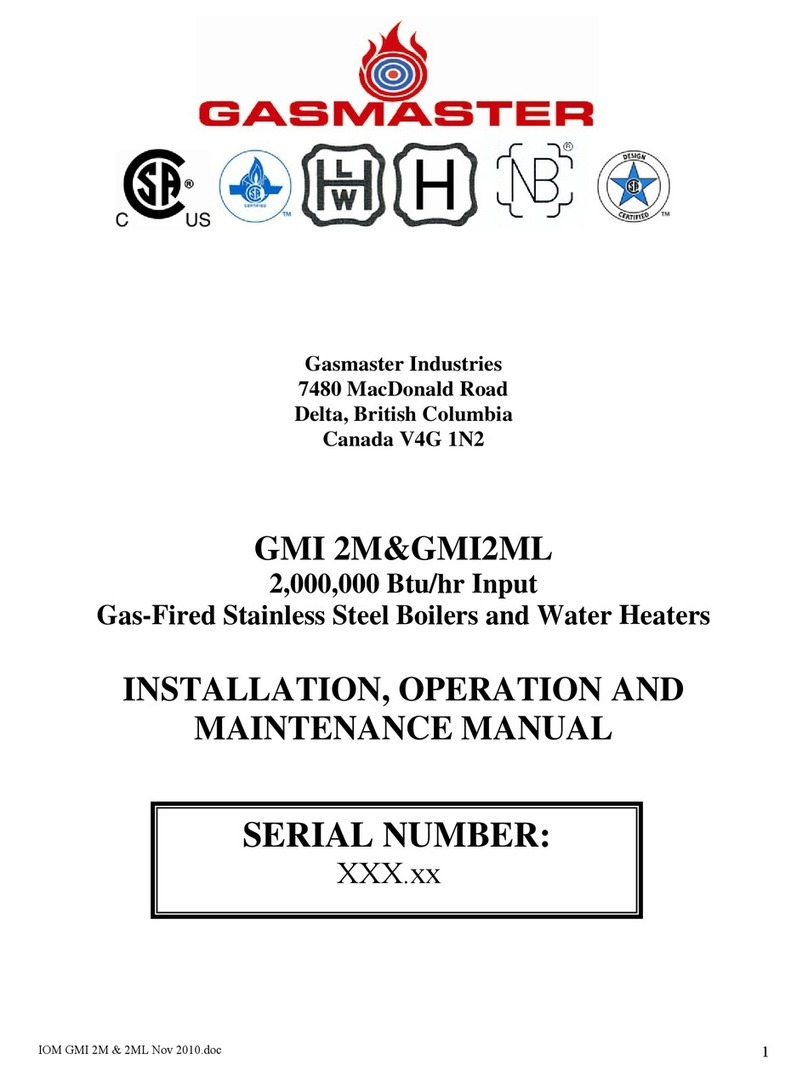
IOM GMI 8M Nov 2010.DOC - 5 -
1.1 Boiler Description
The Gasmaster GMI 8M series is a gas-fired water-tube boiler with nominal input rating of
8,000,000 Btu/hr. The heat exchanger has 24 vertical coils that are held parallel by clamps. The
clamps are connected by three sets of SS spacers/ready rods and adjustment nuts. The coils are
constructed of ASME SA-249 Grade 316/316L stainless steel tubes of 0.065” wall thickness.
There are two horizontal flanged inlets on the front side of the boiler. The outlet is vertical, on top
and at the rear of the boiler. The inlets of the coils are welded to the stainless steel inlet manifold
pipes. The outlets of the coils are welded to the tube sheet assembly. The outlet manifold assembly
is bolted onto the tube sheet assembly. The manifold connections are all 4” Stainless Steel flanges.
The standard safety devices, such as pressure relief valve and LWCO are all on the outlet
manifold.
The space in the central part of the coils defines the combustion chamber of the boiler where
natural gas is ignited with air to form hot gas. The volume outside the coils and within the boiler
liner is the boiler chamber. The chamber is sufficiently big to establish a stable flu gas condition
outside the heat exchanger. The inner liner and the outer casing are typically all corrosion resistant
stainless steel sheets. In between the liners there is a two-inch thick mineral insulation, to provide
optimal thermal and sound insulation. A catch tray is secured to the base of the housing for
collection of the condensate. The condensate exits the housing through an outlet at the bottom
right of the boiler.
The heat exchanger operates in a simple fashion. Gas burner ignites natural gas and air in the
central part of the heat exchanger. The hot gasses cool as they pass through the gaps of the coils.
Combustion products exit the housing through a 24” diameter exhaust outlet on the top panel.
Meanwhile, the water flows through the inlet manifolds and is divided into each coil. Water enters
each coil from the perimeter of the heat exchanger and exits at the center (near the burner). The
water from the coils is then collected and mixed in a dish end cap to achieve a uniform water
temperature before it exits out of the boiler. The water flows in the opposite direction of the
combustion, thus allowing for a gradual pick up of heat as it circulates through the coil. Finally,
heat is transferred through a “counter flow” process. This design reduces the chances and impact
of thermal shock and increases the life of the heat exchanger.
The exact mechanism of heat exchange is a complicated engineering phenomenon, involving
combination of flow, temperature, fouling factors, and two-phase conditions. The boiler is
designed for flue gas condensation for the high energy extraction. Flue condensation will occur if
the temperature of the inlet water is below dew point, usually 120 degrees Fahrenheit. Because the
flue condensate is corrosive, the internal structure of the boiler is constructed out of stainless steel
304/316L or better to offer the highest service life. Corrosion related failures are the typical
problems which can be managed through a scheduled progressive inspection and maintenance
program. Lastly the condensate and the flue venting should be safely processed to the environment
according to local jurisdiction and building codes.




















